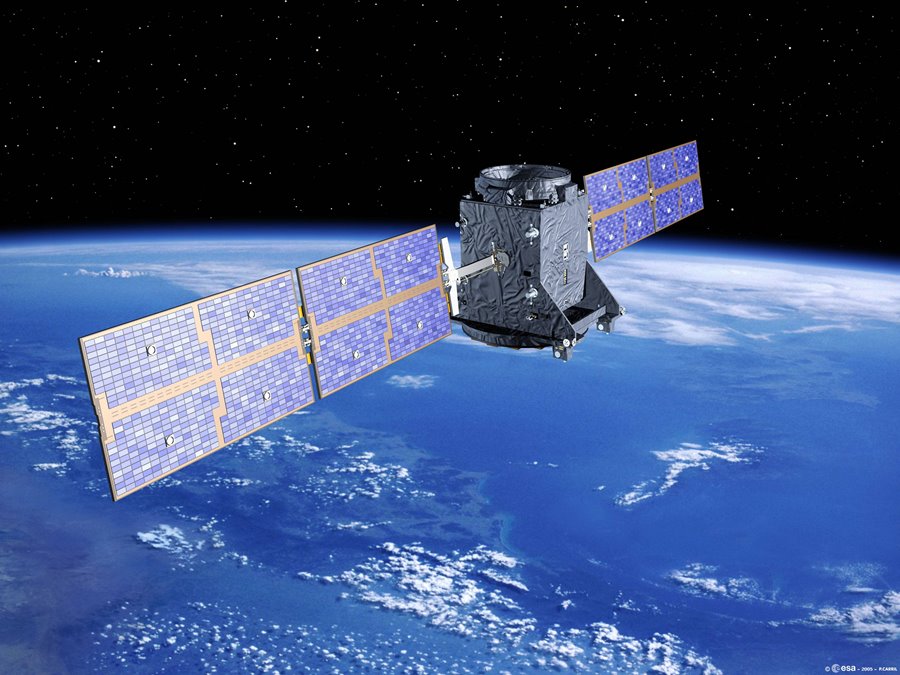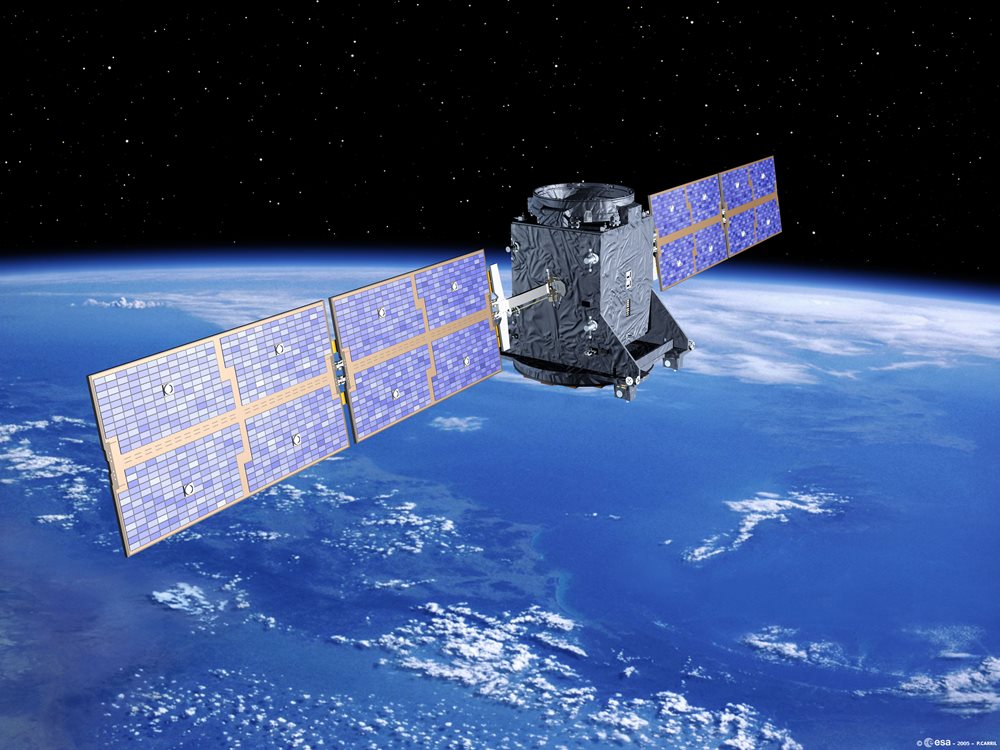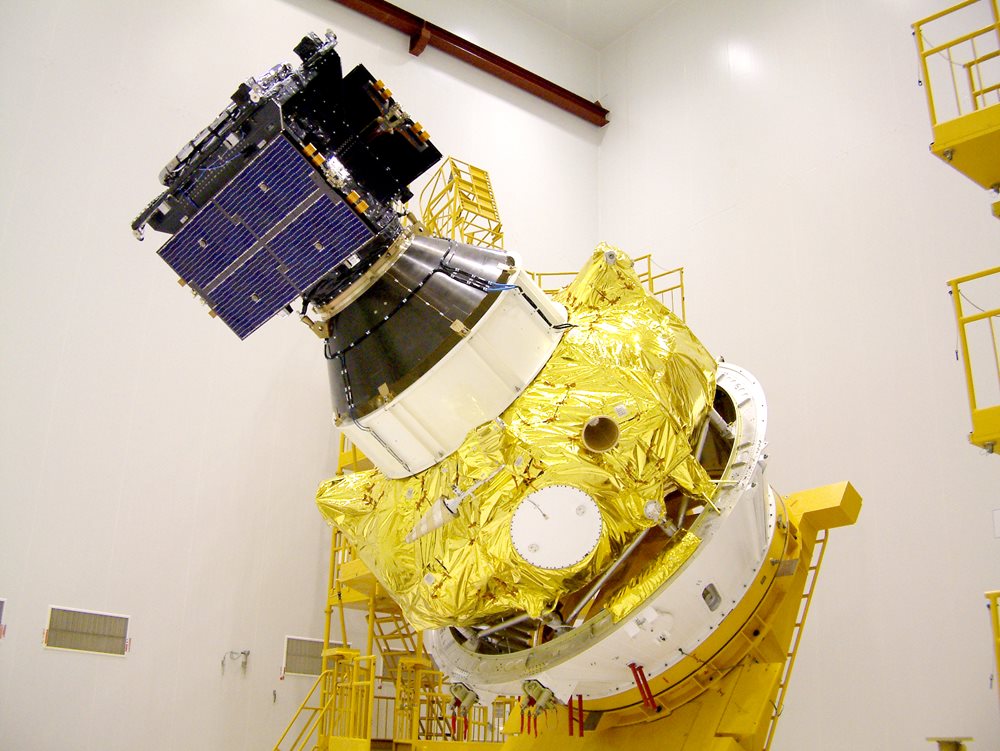
British small satellite manufacturer Surrey Satellite Technology Ltd (SSTL) is today marking the 10th year of in-orbit operations from its GIOVE-A satellite, the pathfinder mission for Europe’s Galileo satellite navigation programme. Since retirement from its original mission for the European Space Agency, SSTL has operated the spacecraft at 23,300km where it provides valuable data about the radiation environment in Medium Earth Orbit (MEO), and an on-board experimental GPS receiver is used to map out the antenna patterns of GPS satellites for use in planning navigation systems for future high altitude missions in Geostationary orbit (GEO), and beyond into deep space.
John Paffett, Director of Telecommunications and Navigation at SSTL, summed up GIOVE-A’s achievements by commenting “GIOVE-A is a milestone mission for SSTL which has demonstrated that our pragmatic approach and innovative, low cost, small satellites can deliver critical mission requirements for landmark space programmes, such as Galileo.”
GIOVE-A was designed, built and tested by SSTL in only 30 months for the European Space Agency (ESA) and was launched on 28 December 2005 with a mission to secure vital frequency filings, generate the first Galileo navigation signals in space, characterise a prototype rubidium atomic clock, and model the radiation environment of Medium Earth Orbit (MEO) for future Galileo spacecraft. GIOVE-A was the first European satellite launched into the demanding MEO radiation environment, where it has greatly out-performed its 27 month design lifetime, and is still in operational use.
In 2008 GIOVE-A was declared a full mission success by the European Space Agency and the following year the pathfinder satellite was retired from its original successful extended mission and manoeuvred into a higher “graveyard” orbit. SSTL then took over spacecraft operations from ESA and, at its new altitude of 23,300km, GIOVE-A has continued to provide valuable in-orbit data, both on the MEO environment and also from SSTL’s SGR-GEO, an experimental GPS receiver.
Designed and built by SSTL with the support of ESA and the UK Space Agency, the SGR-GEO receiver tracks GPS signals from transmitting GEO satellites, including the sidelobes not normally visible to ground-based systems. The performance of GNS receivers at high altitudes is very sensitive to sidelobe strength, and data from the SGR-GEO is helping our understanding of the behaviour that might be expected, allowing the development of new receivers for new missions at high altitudes.
The Merlin radiation monitor on-board GIOVE-A has collected a unique 10 year record for the MEO orbit and data analysis at the Surrey Space Centre, supported by ESA, has shown some interesting features such as the “electron desert” in 2008/9 during what was the lowest solar minimum of the space era, and one of the largest electron storm events on record in April 2010. Several scientific journal papers have been published from the radiation data generated by GIOVE-A and a new model of the outer Van Allen belt electron fluxes, ‘MOBE-DIC’, has been produced to help improve future satellite designs.
Keith Ryden, Reader in Space Engineering at the Surrey Space Centre, says “We really hope Giove-A will continue to operate for at least another year to reach its 11th birthday which would give us a complete solar cycle of radiation data! Congratulations to SSTL for building such a robust spacecraft and squeezing so much value out of it!”
In 2010, following the success of the GIOVE-A mission, SSTL was awarded a contract to assemble, integrate and test 22 payloads for the full operational capability Galileo spacecraft for the European Commission. Galileo is Europe’s own Global Navigation Satellite System, providing real-time positioning services, and it will be interoperable with the American GPS system and Russia’s GLONASS system.
This document has been produced under funding of the European Union. The views expressed herein can in no way be taken to reflect the official opinion of the European Union and/or ESA. The Full Operational Capability phase of the Galileo programme is managed and fully funded by the European Union. The Commission and ESA have signed a delegation agreement by which ESA acts as design and procurement agent on behalf of the Commission. The views express in this Press Release can in no way be taken to reflect the official opinion of the European Union and/or ESA. “Galileo” is a trademark subject to OHIM application number 002742237 by EU and ESA.
About SSTL
Surrey Satellite Technology Limited (SSTL) is the world's leading small satellite company, delivering operational space missions for a range of applications including Earth observation, science and communications. The Company designs, manufactures and operates high performance satellites and ground systems for a fraction of the price normally associated with space missions, with 450 staff working on turnkey satellite platforms, space-proven satellite subsystems and optical instruments.
Since 1981, SSTL has built and launched 47 satellites for 20 international customers – as well as providing training and development programmes, consultancy services, and mission studies for ESA, NASA , international governments and commercial customers, with an innovative approach that is changing the economics of space.
Headquartered in Guildford, UK, SSTL is part of the Airbus Group.
www.sstl.co.uk

